What to look for in a Datsun 240Z, 260Z, and 280Z
Nearly 50 years ago, a small Japanese car company eager to expand its footprint in the United States made the fateful decision to do what no other automaker in its home country had ever attempted: tackle the European sports car heavyweights head on with a model that would not only best them dynamically, but prove to be far more reliable than anything hailing from Germany, Italy, or England.
The result was the Datsun Fairlady Z, a car better known simply as the Z car by American enthusiasts (or its S30 chassis code for true JDM nerds). The first 240Z—named after its 2.4-liter straight-six engine—was shown off at the Pierre Hotel in New York City in the fall of 1969, and the majority of sales took place the following year. The popularity of the car was both instant and enormous, driving significant volume for Datsun and making it a common name anywhere sports cars were raced or appreciated.
The S30 would remain in production until the late 1970s, undergoing a series of running drivetrain changes and trim updates until it left the scene at the end of the ’78 model year. This lightweight, affordable, and well-engineered coupe proved that the “built in a shed” ethos that had long driven the Little British Car industry was truly outdated—and forced every would-be competitor to step up their game.
Today, the Datsun Z remains an inexpensive way to own a classic sports coupe. With so many examples having been produced, the cars are far from rare, which has helped to keep prices reasonable. While a mint condition early 240Z will fetch $65K at auction, a driver 280Z can be had for less than $10,000, and you’ll find an entire universe of options below the $20K mark. Their simple mechanicals are friendly to DIY owners and shops alike, but at the same time, the use of thin ’70s-era steel hasn’t done the Z any favors in terms of resisting the tin worm, which means not every S30 survivor is one you’d want to own.
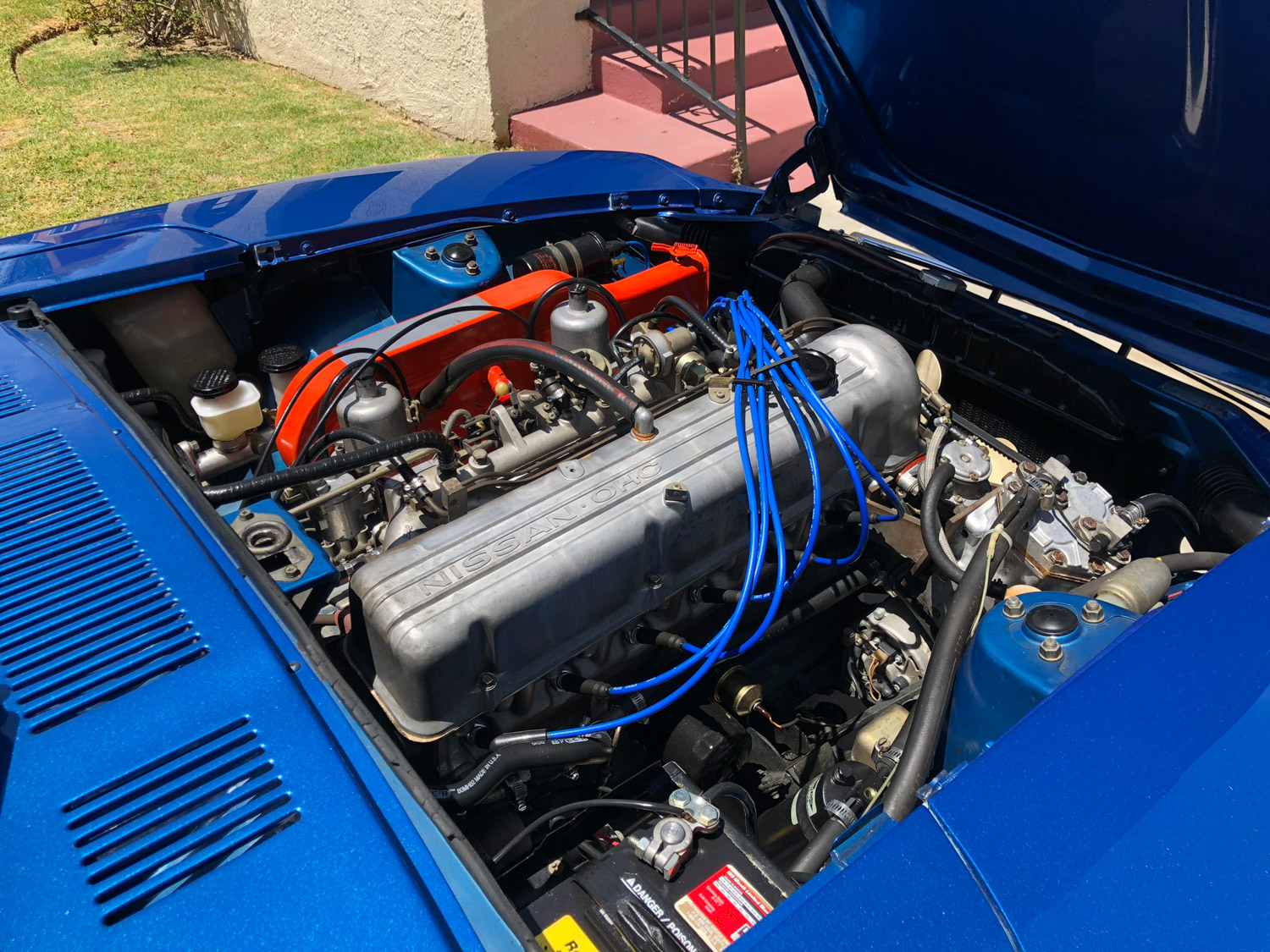
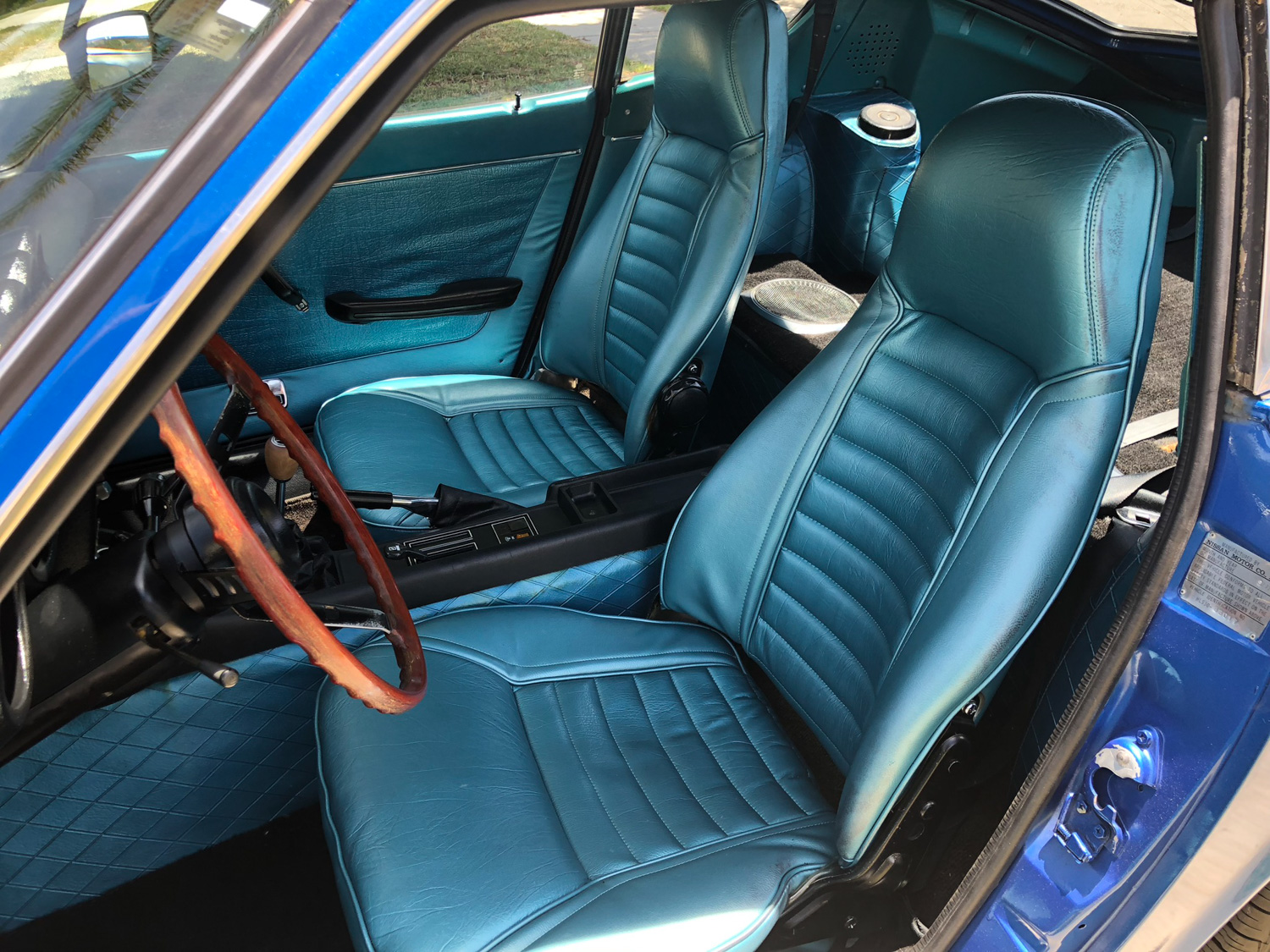
How can you tell the difference between a Datsun that’s a keeper and a 20-footer that should never grace your garage? To get the scoop we spoke with Ryan Gardner, owner of ZCar Depot; Mike Hanson, manager of Whitehead Performance; and Dave Epstein, who founded Arizona Z Car. It also helps that I went through the Z buying process myself a few years ago, and have gathered a fair amount of hard-earned wisdom to impart about the dos and don’ts of owning a classic Datsun.
Meeting the players
Although there were three distinct versions of the Datsun S30 exported to the U.S. during its initial 1969–78 run—the 240Z, 260Z, and 280Z—all were largely similar. Only details and drivetrains set them apart. Still, when it comes to pricing, desirability, and parts availability, the distinction between one model and another (including the date it was born) is fairly important.
The earliest Datsun 240Zs were built from October 1969 through January 1971, and they are referred to as Series I cars. It’s important to note that only 543 of these Series I cars were produced in 1969, and of those a mere handful were sold as ’69 model year vehicles, making them the rarest of the early cars.
As a whole, however, 1970 Series I cars are the holy grail of S30 collectors due to their relative scarcity (16,215 sent to America for that model year, compared to 33,684 the year after), and as such you can expect them to command the highest dollar when found in good condition. The Series II 240Z was built between February and August 1971, followed by Series III (August 1971–September 1972) and finally Series IV cars (September 1972–September 1973), totalling just under 150,000 240s in the United States.
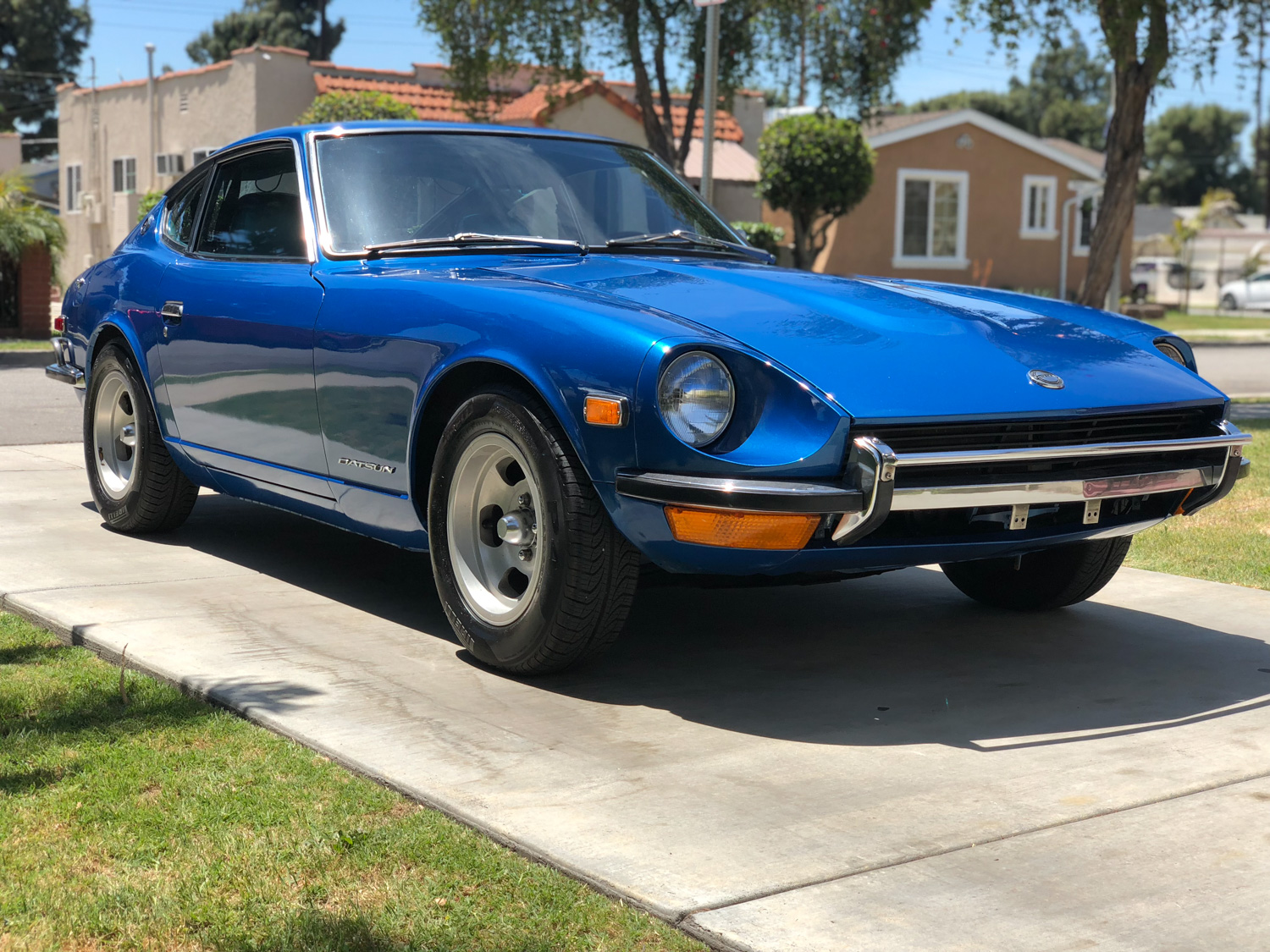
Immediately following the 240Z was the 260Z, a short-lived tweener that arrived just after the 240 and pushed engine size up to 2.6 liters. An 18-month American production run was split between cars that fell into the ’74 model year and those that crept into the first three months of 1975 (sometimes called ’74.5 cars). The 260Z was also the first model to offer a 2+2 four-seater option on a long-wheelbase chassis, a relatively unpopular option among Americans that remains supremely affordable to this day as a result.
Here’s where things get a bit weird. In the rest of the world, the 260Z would continue on until the S30 platform was retired at the end of 1978, but in the U.S. a fresh 280Z (with, you guessed it, a 2.8-liter engine) hit the streets for 1975 and hung around till the end.
This makes it tough to figure out just how many 260Zs were actually built versus the 280Zs, due to how Datsun reported its yearly sales numbers. Estimates vary from 50,000 or so 260Zs for 1974, with maybe 10 percent of that number offered during the brief ’75 appearance. Roughly 228,661 280Zs were sold in the U.S. from ’75–78, which represented about 90 percent of global production. All told? Close to 450,000 Z cars made it across the Pacific from 1969–78.
If you’re trying to find the build date on an S30, there are two ways to do it. First, you can check the data tag on the door jamb, which should include the year and month the car was born. If that plate is missing, you can snag the car’s VIN, which, in addition to being on the tag can also be found on the driver’s side dashboard as a metal plate that can be read through the windshield, as well as on a data tag located on the strut tower, passenger side, under the hood.

American-market 240Z and 280Z coupes feature a VIN that starts with HLS30 (H representing a 2.4-liter or 2.8-liter engine, L for left-hand drive, and S30 the chassis code), followed by numbers indicating the vehicle’s rough sequence on the production line (a 260, however, will show RLS30, with R representing the 2.6-liter engine). There are several online registries available that can place your car’s VIN in the right spot alongside those already reported to help you figure out its production date.
The engine-bay plate also features the car’s original paint code. The S30 was offered with a wide variety of hues, ranging from 901 (Silver Gray) to 920 (Safari Gold) in the first year alone. White, blue, red, orange, brown, bronze yellow, and green were all available, along with a number of metallic variations of the same. Interiors were predominantly black or a mix of black, beige, and brown, but red, white, and blue were also available.
The engine itself will feature a number stamp with a serial number, essentially either L24 (2.4 liter), L26 (2.6 liter), or L28 (2.8 liter) followed by identifying digits that should match the engine bay data plate’s engine number.
Telling them apart
From the above you’ll have noticed considerable overlap between not just the 260Z/280Z in terms of model year, but even the Series I/Series II 240Z. Fortunately, there are a number of ways you can visually spot the model year you’re looking at when inspecting a potential purchase. Remember, Datsun made running changes to the car on a continual basis, sometimes even within the same model year, so feature variations can and will be found on certain models (although styling is largely locked in).
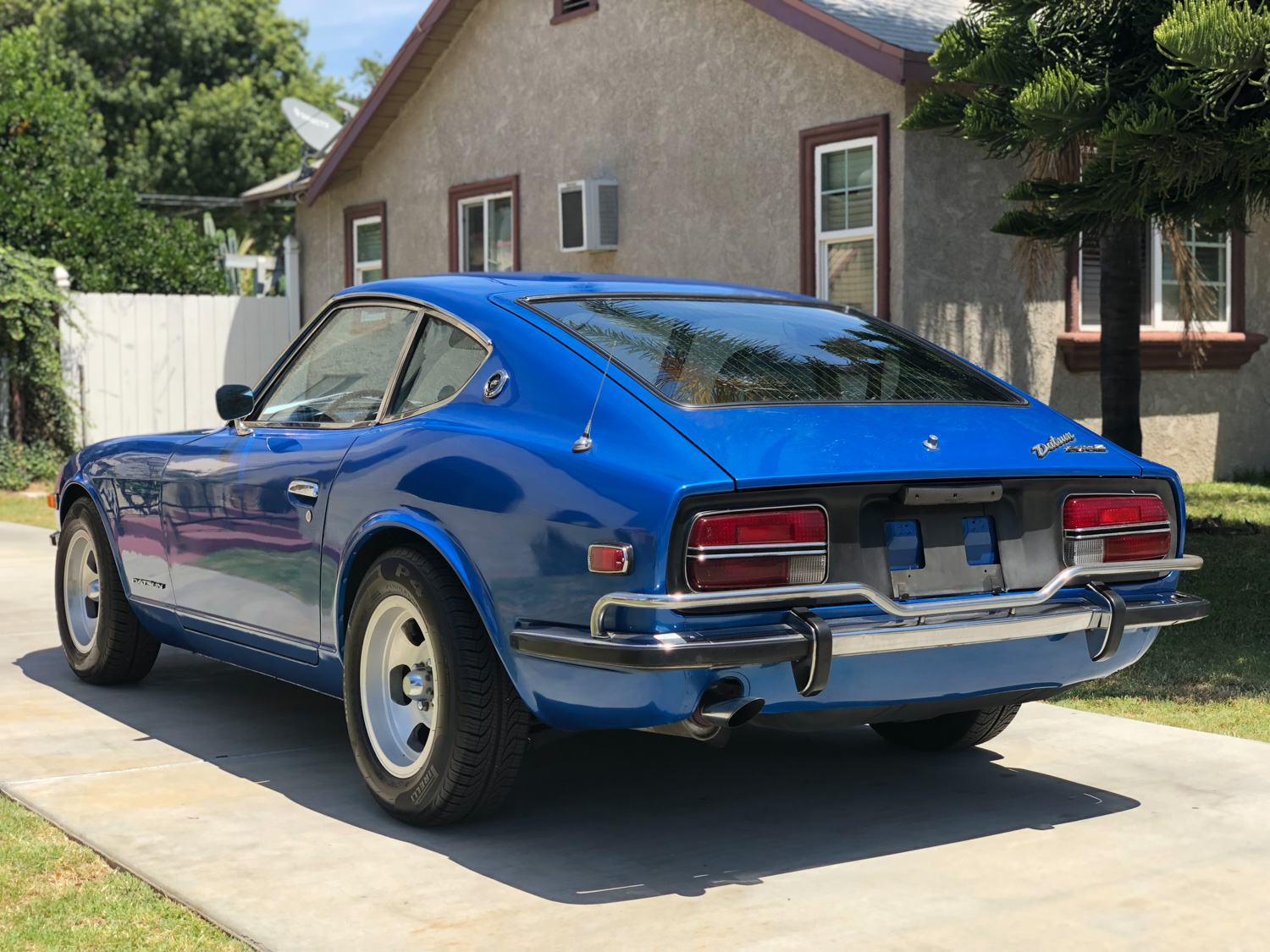

The Series I 240Z is easily distinguished by the air exhaust vents built into its hatch, a design cue that disappeared with the Series II cars when the vents became circular and were relocated to the C-pillar (with the car also gaining larger sun visors, swapping in a speedometer starting at 0 mph rather than 20 on the earlier cars, and a few other minor updates). Series III cars looks like Series II externally, but feature a different center console design and a dash-mounted cigarette lighter, and features such as a seatbelt warning buzzer. Series IV cars received steel headlight buckets rather than fiberglass, a new dash layout, and larger bumpers mandated by federal regulations.
The 260Z, being somewhat of a mongrel in terms of features and design, offers either rubber overriders on the same bumpers found on the Series IV 240Z, or full diving-board bumpers (that would carry through the 280Z to the end of S30 production). It’s important to note that although you may see the 260Z and 280Z listed as longer than the 240Z, it’s the bumpers that are adding the extra six inches—the bodies are exactly the same in almost every dimension.
Other differences for the 260Z included moving the turn signals from underneath the bumper to just above and inside the grille, displaced from their lower fender roost by the giant steel 5-mph bumpers hanging off the car. The 2+2 body style includes a longer, flatter roof, a larger rear quarter window, and of course a set of child-only rear seats to take advantage of the close to 12 inches of extra wheelbase.
“It takes a special owner to buy a 2+2,” Mike Hanson says. “There are so many unique parts for the four-seater, inside and out, and they’ve fallen so far by the wayside, that you almost need a complete parts car alongside your restoration candidate to have any hope of completing the project. The market value for these models is very low.”
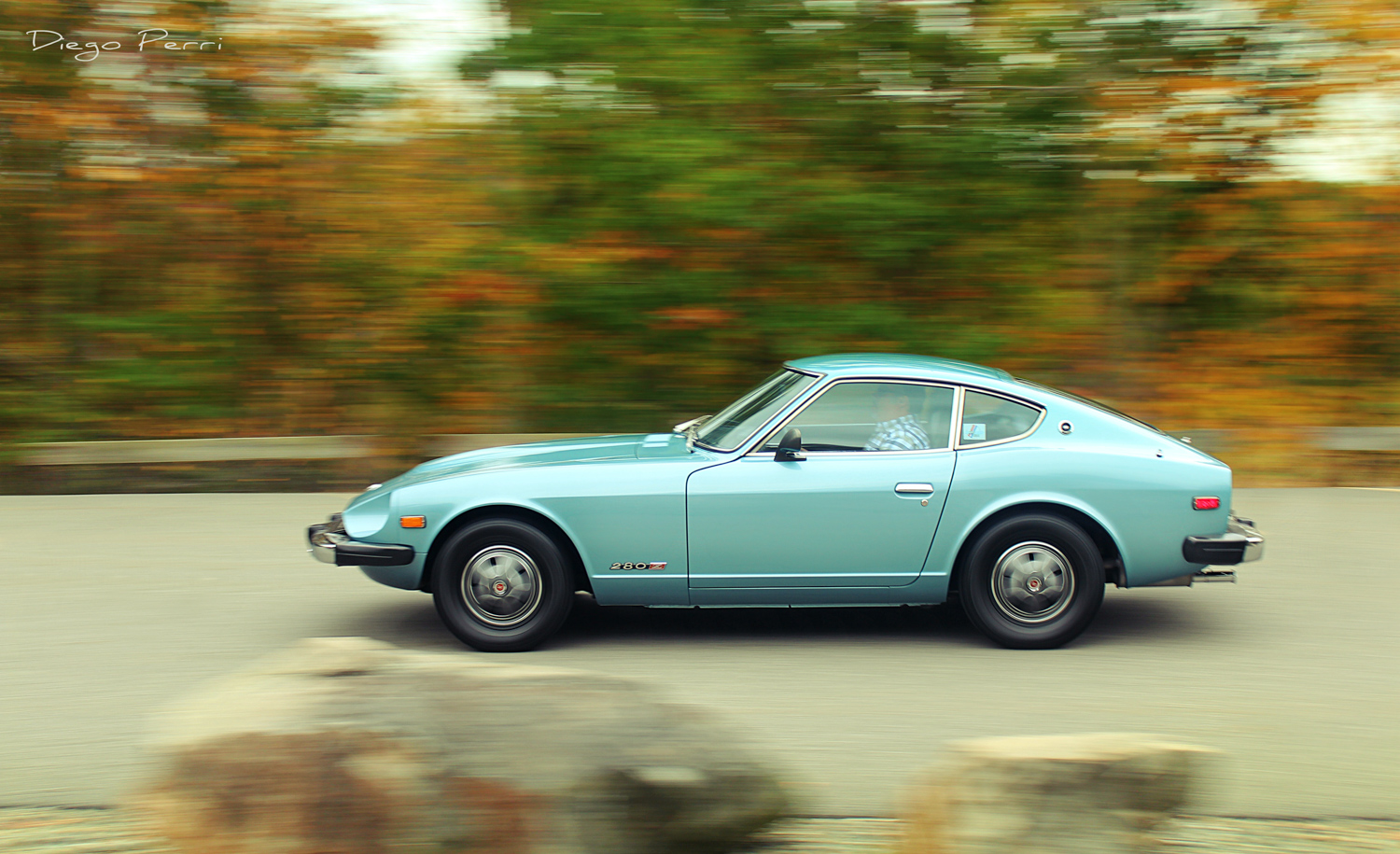
The 280Z is mostly a visual match for the 260Z, save for crimped rubber bumper extenders and louvered hoods that were added to the mix in 1977. There were a few special edition 280Zs out there, but not many have survived to present day. They included the ZZZap Z, which in ’77 paired its all-yellow paint, black stripe, and rear window louvers with its own custom arcade game (surely a first in automotive history).
This was followed by the Black Pearl the year after which was, well, a black Z (albeit the only black S30 produced). Between 1000–1500 were sold. Used a part of a test program to see how much Datsun owners wanted a black car, it would spawn the Black Gold 280ZX when the car was refreshed for 1979, inspiring moustache fantasies throughout the ’80s thanks to the over-the-top masculinity embraced by its ad campaign.
Under that long hood
We’ve already established that the 240Z, 260Z, and 280Z each featured different engines, but the details of what motor and transmission was available with which car are somewhat fluid from one year to the next.
At the very least, things are simple in the transmission department. In America, the 240Z and 260Z were only ever offered with a four-speed manual or a three-speed automatic (despite the existence of a five-speed in Japan and overseas). The 280Z would add an optional five-speed to the mix in 1977, which featured almost identical gear ratios to what was offered in the 280Z’s four-speed with the addition of an overdrive gear.


The L24 2.4-liter six is a different story. Originally, the single-overhead cam motor was good for 150 horsepower and 146 lb-ft of torque, and came with a pair of Hitachi-made SU-licensed round-top carburetors (which featured three different designs depending on model year). This was more than enough output for the relatively lightweight (2300 pounds or so) Z platform, giving it a 0–60-mph sprint of just under eight seconds.
By 1973, however, the EPA’s looming emissions regulations caused the 240Z to switch to flat-top Hitachi carbs, which have garnered a much poorer reputation for reliability and tunability within the Z community (where they’ve been nicknamed the “boat anchors”). It’s not unusual to see round tops, or even aftermarket units, replacing the flat tops on ’73 model year cars. While you can make flat tops work, they are complex and more difficult to source parts for or find knowledgeable help with.
“We used to bust the flat top’s off of the intake with a sledgehammer because they were faster to remove that way,” Dave Epstein says with a laugh. “These carburetors were undrivable, but the earlier SUs were better. We make a manifold that lets you use an Edelbrock or four-barrel Holley, which are cheaper to maintain and rebuild, don’t leave you stranded, and avoid synchronization hassles like you have with a dual-carb setup.”
When the 260Z appeared in ’74, it kept the flat top SUs but mated them to a larger 2.6-liter six that was down to 139 horsepower (but up to 157 lb-ft of torque) due to even greater emissions choking.

The 280Z also boosted displacement (to 2.8-liters), installed a new head (the N42) with desirable square exhaust ports, and added Bosch L-Jetronic electronic fuel injection—an effort that would result in 170 horses and 163 lb-ft, enough grunt to fight off the extra 300 pounds or so that the model’s larger bumpers and additional features and chassis bracing had added to the platform. The 1977 model year would see the introduction of the N47 engine head, which swapped in diamond-shaped exhaust ports that some enthusiasts feel offers poorer flow.
A well-maintained L28 fuel injection system and an L24 with round-top carbs are well-understood, hassle-free setups that are reliable enough for daily driving. “The motors are basically bulletproof,” Epstein confirms. “Even if they were only maintained with a once-in-a-blue-moon oil change. You’ll sometimes see the aluminum heads eaten up if bare water was used instead of an antifreeze mix, but that can be repaired.”
The key phrase here is well-maintained.
“I get a lot of calls from those with fuel injected cars that are running rough, or just won’t start. Everything is so interconnected on the Bosch system that it can be a bit of a hassle to diagnose what, exactly, is causing the problem,” Ryan Gardner says.
If you’re looking for more power there’s really nothing to be gained from modifying an injected L28, unless you move to a complete stand-alone engine management system, as its computer controls are too primitive to tune. It’s not unusual to see L28s that have been converted to run on carbs like their L26/L24 brethren, and there’s a healthy aftermarket supporting all L-series engines with camshafts, carburetors, and intakes. Other popular power adders in the Datsun community include P90 heads from the later ZX S130 car, as well as aggressive camshafts and forced induction (with the ’80s-era L28ET a common swap).
One last note on the Datsun S30’s mechanicals. As a result of the car’s unusual aerodynamics, driving with the windows down creates a vacuum inside the car area, which sucks exhaust fumes in through any crack in the hatch seals, taillight seals, or floor that might be lurking.
“Sometimes, the drain plugs in the bottom of the hatch area can even drop out because of age and brittleness, providing easy entry for fumes,” Epstein confirms. “It’s very common to get out of one of these cars after a long drive and smell like gasoline.”
Rust is real
Although the S30 Z’s susceptibility to corrosion was casually mentioned early on in this buying guide, this is the part where it gets underlined in red ink about 50 times, then highlighted, then set on fire. It is very, very difficult to find a rust-free Datsun Z, even in traditionally dry spots like California. On the east coast, it took me a full year of searching before I was able to personally snag a clean 280Z, and I had to wade through some genuine nightmare cars in the process.
“In all of the places where the car was spot-welded together, there’s no paint or primer from the factory,” Epstein says. “If they had dipped the car when brand new it would have lasted forever, but there’s a lot of unprotected metal. It was meant to live for three years in Japan, but here we are 40 years later.”
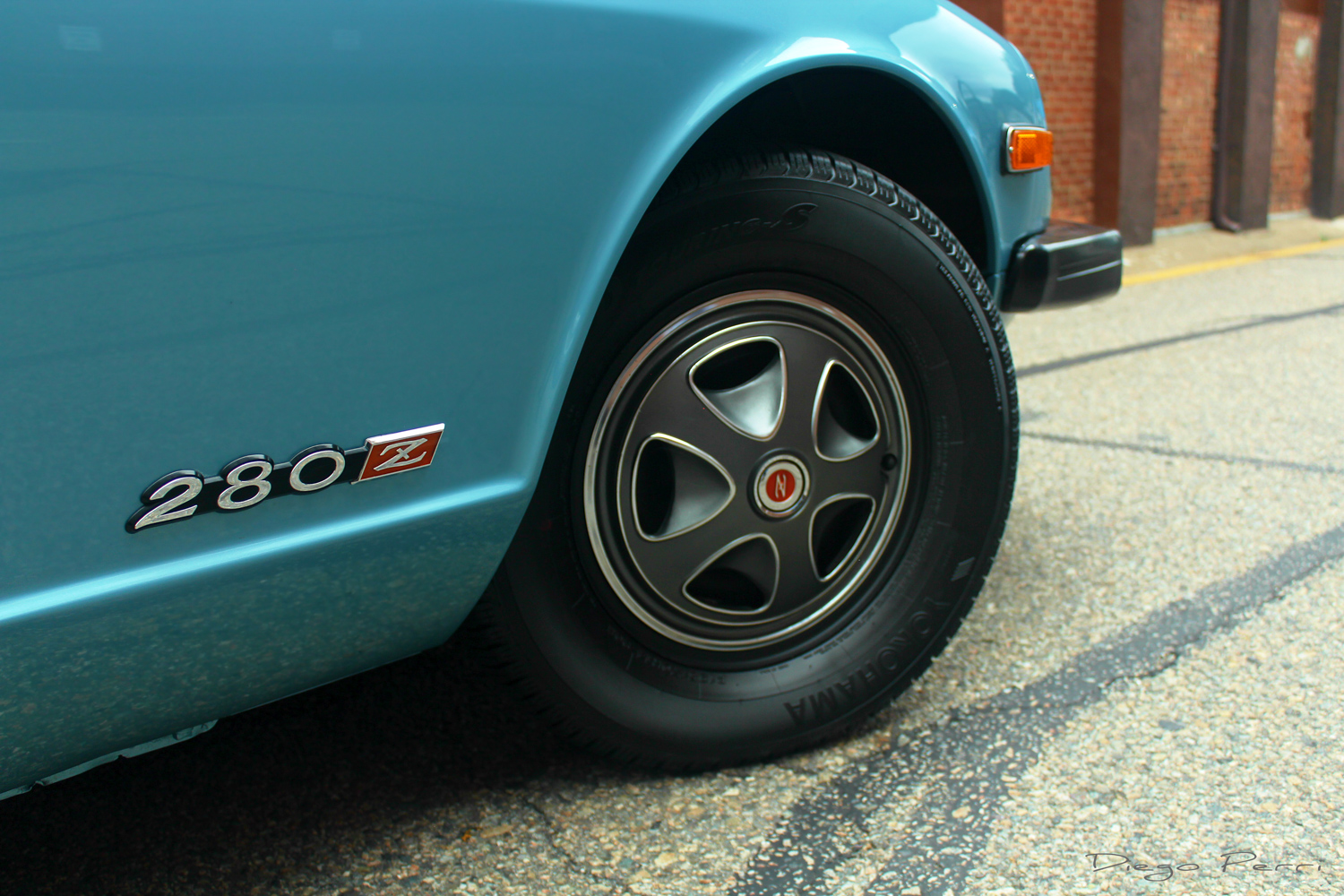

Where will you most commonly encounter rust on a Z? “Check the dogleg just in front of the rear wheel arch, the rear arch itself, the deck lid under the hatch, and the rocker panels, especially where they meet the back of the front wheel well. Harder to spot are holes in the frame rails and floorboards (you’ll want to lift-up the carpet and put the car on a lift to be sure), as well as the battery tray (remove the battery for inspection). There’s also a sponge under the wiper cowl panel up front that soaked up moisture and trapped it against the metal.”
The good news is, almost all Datsun body and frame panels can be found either used (thanks to the huge number of cars that were manufactured), or reproduced.
For example, frame rail kits that weld in on top of the stock units, and actually connect the front and rear subframes, are available from a number of suppliers at reasonable prices, as are floor pans. This means if you find a car you like, and the rust is restricted to non-structural areas—aka not the unibody, or the rear quarters (a troublesome repair)—you’ll most likely be able to replace what you need to.
“We get a lot of customers looking to replace sheet metal—it’s probably the most common call we get, aside from engine maintenance items,” Gardner explains. “Most sheet metal, like front fenders, for example, will swap from a 240Z to a 280Z, but things like doors are another story. The cutouts on the later cars, where you’d attach the interior door panels, are completely different, and in ’77–78 they went to a unique latch. You can make it work, but if your plan is to keep it all original, you might not want to go through that kind of hassle.”
Mike Hanson continues:
“You can’t get full rear quarters anymore, just the arches. A lot of the time, it’s not just rust that’s the problem—we have to go in and undo previous repairs to try to find enough clean sheet metal to work with. Original metal is a lot easier to work with. This is also true of the area under the battery tray—you can’t get replacement panels, so it has to be done custom—and that means poorly-executed past repairs can be a real problem.”

The running changes mentioned throughout this guide (which also include different floor pan sizes, rear end mounting position, and spring rates) have also made it somewhat difficult to find certain interior trim parts (knobs, switches, etc), as well as electrical components.
“Ninety percent of these cars had black interiors, which means any color trim—tan, white—isn’t being reproduced,” Gardner says. “You can dye it, but it’s being molded black. If I had a wish list of parts I could snag right now, I’d add a universal wiring harness to it, because right now you’d need about 20 different harnesses to cover the full range of all the updates they made to the S30 over the years.”
Fortunately, the interiors are relatively simple, and the Datsun community is getting better at reproducing small batches of hard-to-find parts. This includes dashboards, which frequently crack with age and exposure to the sun, but which can now be purchased new from some vendors—albeit expensively—or covered for much less money.
Dave Epstein also cautions buyers to do their homework before they start buying restoration parts:
“Make sure you have someone inspect the car and tell you what you’ve actually got, rather than just relying on what it says on the registration,” he explains. “I’ve seen people that have a 280Z with three stock strut housings and one 240Z housing from a junkyard, and then they can’t understand why their new shocks don’t fit all around. The same is true of brakes, suspension components, etc. Even head swaps are common enough that you need to double check. These are old cars with long, potentially clouded histories. I often tell customers we have to unfix what an amateur mechanic has done to their vehicle in the past before we can move forward with the actual repair.”

Hanson agrees. “The absolute most important thing is a thorough pre-purchase inspection, inside and out, by an expert, no matter how good the seller says the car is. That $120 or so can save you from bringing home a money pit. It’s also worth noting that we’re seeing more and more of these cars show up with cheap modifications, including low-end coilovers, or old lowering springs that drop the cars to the point where the ride and handling are compromised.”
Get in before it’s too late
A rust-free, well-tuned S30-generation Datsun Z is one of those rare affordable collectible sports cars that can be enjoyed in modern traffic without feeling like you’re a rolling road block. Quick enough to be exciting, with direct (unassisted) steering and a predictable suspension system, the car is perfect for a joyride in stock form, as well as accommodating to extensive suspension updates for those who want to extract as much handling as possible from the Z’s lightweight platform.
It also happens to feature a design which seemingly has only gotten better with age, proving that Datsun’s decision to incorporate the best visual elements found in contemporary Jaguar and Ferrari exotica was a winning strategy. There aren’t many Japanese cars from the Z’s era that can make a legitimate claim at being sought-after classics, but this is definitely one of them.
Just make sure you snag one before everyone else comes to the same realization.

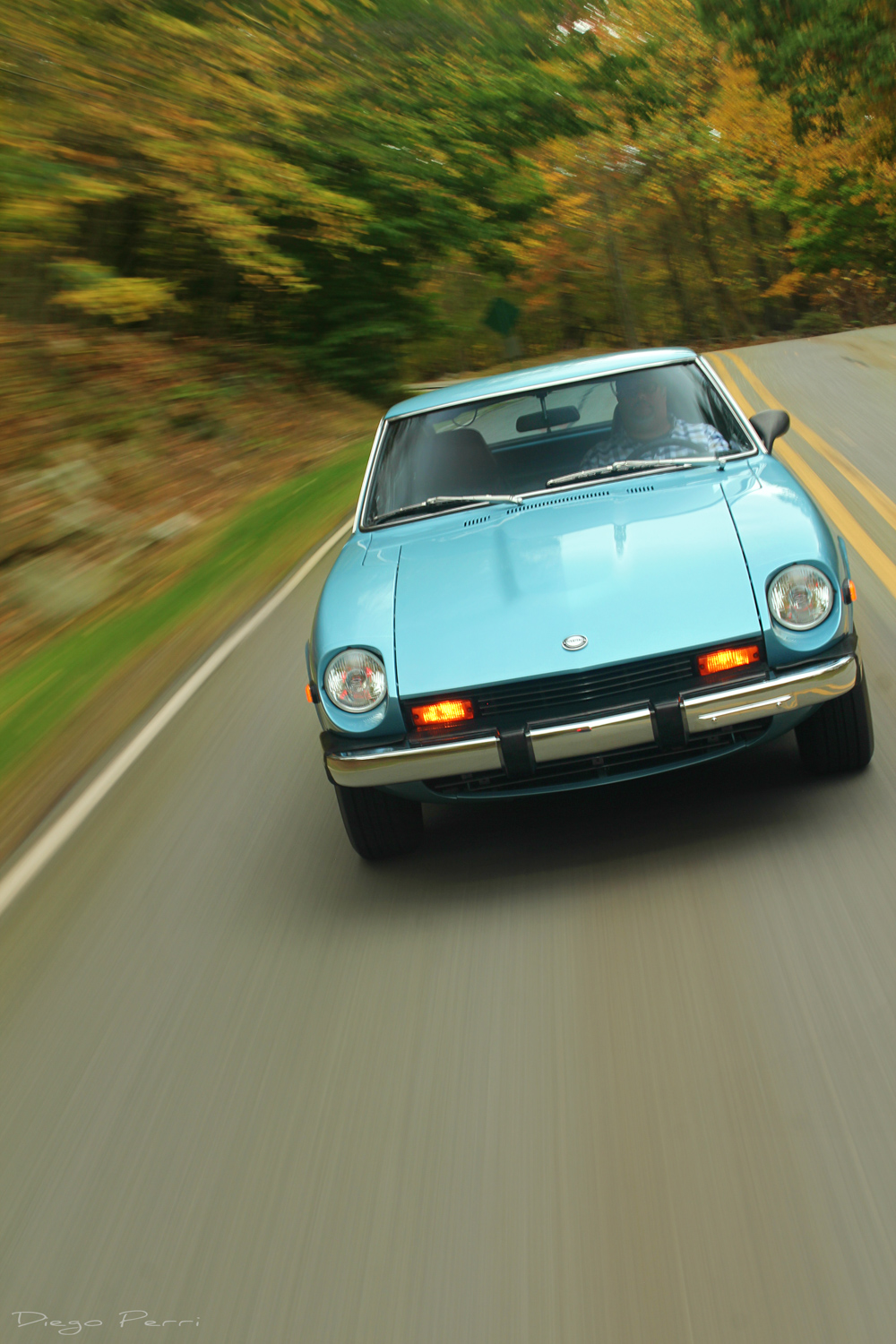


Good story as I found it unleavable.
My 74 & 77 both need TLC so next I’ll check for rust although 74 has been stored out of the UV while 77 has been in full exposure in the Las Vegas valley for 20+- years.
Black paint on 77 has blisters now and tires are bad while on blocks all the time.
,,,MAYBE,,,